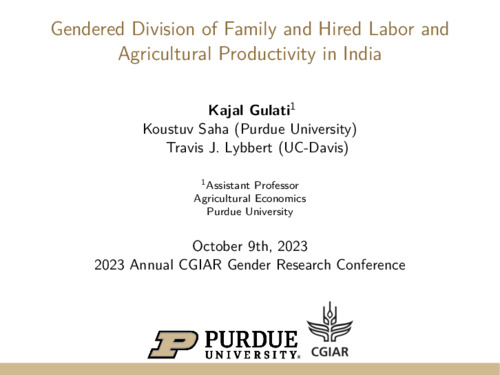Gendered division of family and hired labor and agricultural productivity in India
Abstract
Studies on the gender gap in agricultural productivity rarely consider differences arising from the differential use of women workers on the farm. Yet, genderbased norms and frictions in the rural labor markets of women may lead to skill-based differences between hired and family labor—differences that are more distinct for women than men. This study examined agricultural productivity differences based on the differential use of hired and family women’s labor in India. Using plot-level, input-use data collected from rice-cultivating households, we classified households into three groups: households that exclusively use family women’s labor, households that employ both family and hired women workers, and households that only use hired women workers. We identified agricultural productivity differences after controlling for plot- and household-level characteristics and using village-level fixed effects, as well as estimating these differences based on machine learning and propensity score matching methods. We found that, on average, households that use only family women’s labor have a lower agricultural productivity compared to households that also use hired women workers. These differences appear to be driven by skill-based differences between hired and family women workers; the agricultural productivity gap exists in households where family women work exclusively on their own farms and not outside. The results provide suggestive evidence that expanding women’s experience and skills in farming could contribute to closing the agricultural productivity gap, especially in agricultural production systems where men and women farm jointly and participate in specific tasks.

